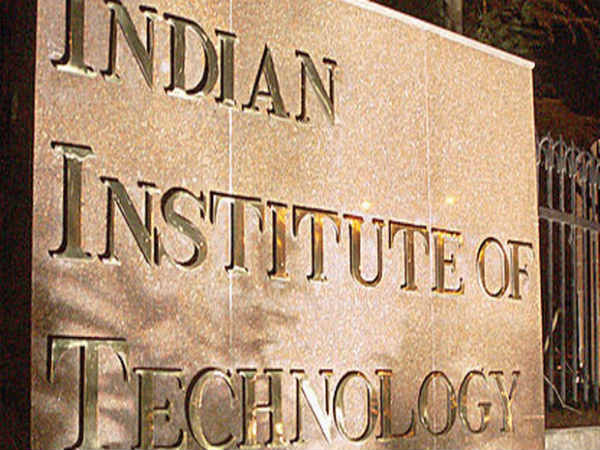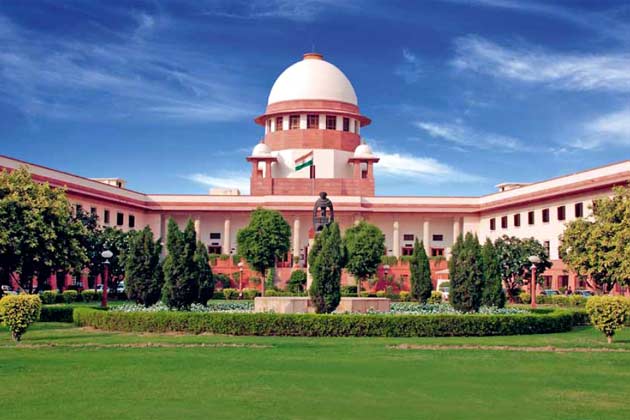
A Ministry of Education (MoE) panel has recommended that the Indian Institutes of Technology (IITs) should be exempted from caste-based reservations in faculty appointments[1]. Out of the many categories of reservation in practice in India[2], it is only the scheduled category reservation (Scheduled Caste, Scheduled Tribe, and Other Backward Classes) that becomes a special target of attack and vilification. This is done using a self-serving definition of excellence. This article holds the view that this flows from a combination of casteism and scientism rather than concern for excellence.
India has implemented Scheduled Category reservation largely on paper
We must remember that what the IITs are demanding is not to implement reservation ‘in principle’ and not merely ‘in practice’. In practice they were always free to reject the candidates citing non suitability. So far, they have been doing it. The ministry wants a stricter implementation and therefore this rejection ‘in principle’ to the Scheduled Category reservation. If India had implemented Scheduled Category reservation in practice, then today we would not have seen the abysmal low percentage of Scheduled Category amongst faculty in higher education. To be fair, this style of implementation on paper rather than in practice is not only applicable to reservation but also to other measures for the marginalised like the land reforms.
Defining excellence – the Indian way
Sometimes there is extreme distortion to a generally agreed meaning of a term in India. Hinduism is a ‘secular religion’. The same has happened to the definition of excellence of the IITs. They have largely defined excellence themselves without the rest of India having any say in it.
In 2008, the IITs did an exercise to measure their impact. This was done by employing a concept ‘annual revenue responsibility’[3]. An institution for technological excellence tried to measure the impact through a concept more suitable for a management institute! If the ‘annual revenue responsibility’ is a criterion for IIT then what can be the criterion for IIM (Indian Institute of Management)? Secondly, this was ‘impact’ in general at world level and not ‘contribution’ to India. It is unscientific to give all the credit only to the CEO (Chief Executive Officer) to the exclusion of others for the ‘annual revenue responsibility’ as was done in the survey. It is also not fair that only senior positions in private companies are deemed to be contributing and not the lower echelons.
In 2017, Infosys Founder Narayana Murthy said that “there has not been a single invention from India in the last 60 years that became a household name globally, nor any idea that led to “earth shaking” invention to “delight global citizens”[4]. This was a comment not only on the IITs but to other institutions as well which are excused from Scheduled Category reservation in the name of excellence. Aakar Patel agreed to this assertion pointing out the fact that India ranks 57th in the Global Innovation Index 2018[5].
The reason why IITs have not come up with world class inventions is their very design. In response to Narayan Murthy, an ex-IIT faculty echoed the N.R. Sarkar Committee Interim Report (1948)[6] – “It needs to be pointed out here that the main objective when the IITs were set up was to provide high-quality teaching so as to enable the students to acquire their degrees in various disciplines with high grades so necessary to secure lucrative jobs at home and abroad. They were not really meant to be premier research institutions, an aspect sorely missed by those who indulge in mudslinging at the IITs”[7].
Top-down and bottom-up approach to define excellence
After dethroning religion, science has generated a cult of scientism. This cult has an excessive faith in natural science and a parallel lack of faith in social science. Even at school level the mathematics teacher’s status is a bit higher than the social studies teacher whose status in turn is a bit higher than the physical education teacher. IITs benefit from this popular cult. The government and population have a hands-off attitude towards them. When scientism combines with casteism the natural result would be a demand to banish Scheduled Category reservation from the IITs. It is in this context that absence of reservation equals excellence.
However, application of sociology of science will reduce the sanctity of scientific institutions. Some of the biggest problems do not require high-tech solutions. The good that ‘Right to Information Act’ has to done to the people of India cannot be rivalled easily by any technological innovation. Though Arvind Kejriwal, an ex-IITian was one of its principal architects, this was a social innovation rather than a technological one. He did that after spending some time in the civil service. The covid-19 was not fought with high-tech measures but with primitive measures like lockdown, mask and physical distance. Similarly, unemployment is countered with MNREGA (Mahatma Gandhi National Rural Employment Guarantee Act). These are not high-tech measures but they help the millions.
Theoretically, it is possible for a poor person to put together all his/her money, buy one expensive piece of jewellery and feel happy about it. Many Indians live lavishly on a festival day while the rest of the days go in misery. Similarly, the IIT/IIMs are more of education jewellery of India. They are indeed the cream and not the bread and butter of scientific and technological establishment in India. One can guess that the scientific progress of India has happened largely without the IITs because the backbone of scientific and technological establishment like Bhabha Atomic Research Centre (BARC), Council of Scientific & Industrial Research (CSIR), Indian Space Research Organisation (ISRO) couldn’t have been staffed by the small number of IIT people. One should not forget the difference between BARC, CSIR, ISRO on the one hand and IIT/IIM on the other. Benefits from the excellence of the former is assured only to India while it is not so in case of the later.
The IITs, the IIMs define excellence in their own ways. The people of India, the sponsors of these institutions, have no role in defining the merit of these institutions. If there was a bottom-up approach to define the excellence of these institutions, then people would have judged these institutions on the basis of what they have done for some of the major problems of the people – poverty, unemployment, the violence on Scheduled Caste, Scheduled Tribe, and women etc.
Does autonomy lead to excellence?
Autonomy is the sacred incantation to ward off the devil of accountability. Autonomy is not a practical ‘cost– benefit’ (autonomy-excellence) argument but a moral argument. Both the Soviet Union and China transformed themselves from a primitive to high-tech superpowers – especially in military technology. Obviously, it can’t be said that autonomy existed in the Soviet scientific institutions during Stalin. This means that one can achieve excellence under duress as well. Therefore, the instrumental argument for autonomy doesn’t work. But this doesn’t mean that autonomy is not valuable in itself. Autonomy is more of a moral argument rather than a practical argument of profit and loss the way elementary education is a fundamental right without any calculation of rate of return. It is dangerous to demand autonomy on the ground of excellence because it can be taken away on the same ground as well.
The ideology of Excellence and the ‘upper caste burden’
The ideology/excuse of ‘white man’s burden’ was used by Europe to exploit the rest of the world. The rest of the world could do very little due to the superior military of the Europeans. One can see the same phenomenon in India where the upper castes, especially the brahmin, take upon themselves the development of India in the name of excellence.
If we use the sociologist Robert Merton’s ‘latent function’ (unacknowledged consequence) then we can see that the IITs had two latent functions – enabling upper castes, especially the brahmins, to get MNC (Multi National Corporation) jobs and to access the higher education abroad – especially in the United States. It is exactly these two functions that are also portrayed as excellence. For example, the Rama Rao Committee Report (2004) quoted IIT students’ performance in the GRE (Graduate Records Examination) as signs of their being world class[8].
IITs are supposed to fulfil their responsibility by publication in international (read foreign) journals by faculty and student placement in foreign companies. The Rama Rao committee (2004) mentioned that about 30% of the IIT alumni were in abroad. This is portrayed either as excellence or brain drain but never as morally reprehensible. The ‘payback’ is done when an alumnus pays back to the respective alma mater, not to India at large. Some may be under the impression that remittance from the United States was substantial. But the 1990 economic crisis in India refuted that logic. In 2019, the contribution from the Middle-East (Gulf) countries alone constituted more than 53.5% of the total remittances to India[9]. So, the semi-skilled workers of Kerala pull a bigger punch than high tech IITians in remittance! The payback is also supposed to happen when IITians excel in civil service, politics, economics (Raghuram Rajan) and even literature (Chetan Bhagat). What is technological about all these!
Where does India figure in all of this unless we equate IIT with India! The world class IIT is not financed by world at large but by a poor country like India. Stupendous resource is claimed in the name of national development but any accountability like reservation is denied in the name of excellence.
The Indian state is very much party to this hoodwinking. Many crucial spheres of India are kept out of the purview of reservation in the name of excellence but no compensatory mechanism in lieu of that is specified. If the government wants, it can make a percentage of the total grant conditional on the percentage of Scheduled Category representation in the faculty so that these elite institutions strive to build a cadre of Scheduled Category teachers.
Conclusions – The conception of merit/excellence in India has fallen prey to scientism and casteism. The influence of scientism can be known by asking the question – are the students/faculty of HSS (Humanities and Social Sciences) and B-Tech (Bachelor of Technology) in the IITs are of equal merit? The influence of casteism can be seen whereby ‘merit list’ has a dual meaning- absence of reservation and presence of merit. If merit is not ascriptive but achieved, surely it can be achieved by almost all. Some may take more time and some may take less time. The new IITs are mentored by old IITs who in turn were mentored by institutions from abroad.
If the logic ‘excellence requires absence of reservation’ is accepted with respect to the IITs and IIMs, it has to be accepted with respect to other institutions as well including those of social sciences. This logic, taken to its extreme, may mean absence of reservation in an imaginary ‘Advanced Centre for the Study of Reservation’. The excuse of excellence also can be claimed at all stages of education. If it is claimed at the stage of PhD, which is necessary to become a faculty, then Scheduled Category forever can be shut out to become a faculty.
All government funded educational institutions have the obligation and the right to be excellent but the waiver of reservation cannot be granted to a select few. An institution has to achieve excellence in a real world, not in an ideal condition of free-flowing fund and wild autonomy. If the IITs believe in interdisciplinary approach then they should take this issue as the ultimate interface between technology and social science. This is a joint responsibility of the IITs and the government. Currently it is portrayed as if both sides would have implemented it but for the fortuitous factor of excellence. The government and the IITs cannot get away with the excuse of excellence. The problem is not to be solved in the manner of ‘excellence OR reservation’ but ‘excellence AND reservation’. There has to be a balance between the goal of world class and the goal of people’s empowerment.
Sthabir Khora, Associate Professor School of Education, Tata Institute of Social Sciences
[1] https://www.hindustantimes.com/education/exempt-iits-from-reservation-in-faculty-recruitment-expert-panel/story-cAjhykLMYPappo4bpjPCrO.html
[2] Some of the quotas are – management quota, Kashmir Pandit quota, the earlier quota for people (including upper caste) from hill and Uttarakhand region in Uttar Pradesh, sports quota, Non Resident Indian (NRI) quota, In-service doctors’ quota for PG admission, ex-army quota, domiciliary quota, transgender quota, disability quota, Women quota, Economically Weaker Section, State quota and all India quota in the medical admission, Supernumerary quota for women in IIT. The most interesting case is that a brahmin inhabiting Jaunsar-Bawar of Uttarakhand can claim as Scheduled Tribe as all residents of Jaunsar-Bawar were granted ST status in 1967 (https://timesofindia.indiatimes.com/city/shimla/mp-raises-issue-of-st-status-for-hatti-community-in-lok-sabha/articleshow/74116126.cms).
[3] https://www.ibef.org/download/Impact_IIT_Alumni_1.pdf
[4] https://www.indiatimes.com/news/india/infosys-founder-narayana-murthy-says-there-has-been-no-invention-in-india-in-last-60-years-325902.html
[5] https://www.deccanchronicle.com/opinion/op-ed/070719/lack-of-innovation-is-a-problem-in-india.html
[6] https://www.iitsystem.ac.in/sites/default/files/reviewreports/N.R.Sarkar.pdf
[7] https://www.dnaindia.com/analysis/column-v-subramanyan-why-is-narayana-murthy-obsessed-with-the-iits-1596885
[8] https://iitsystem.ac.in/sites/default/files/reviewreports/26mbRamaRao.pdf
[9] https://factly.in/remittances-to-india-where-does-the-money-come-from-and-what-does-it-mean/
GET COUNTERCURRENTS DAILY NEWSLETTER STRAIGHT TO YOUR INBOX














































